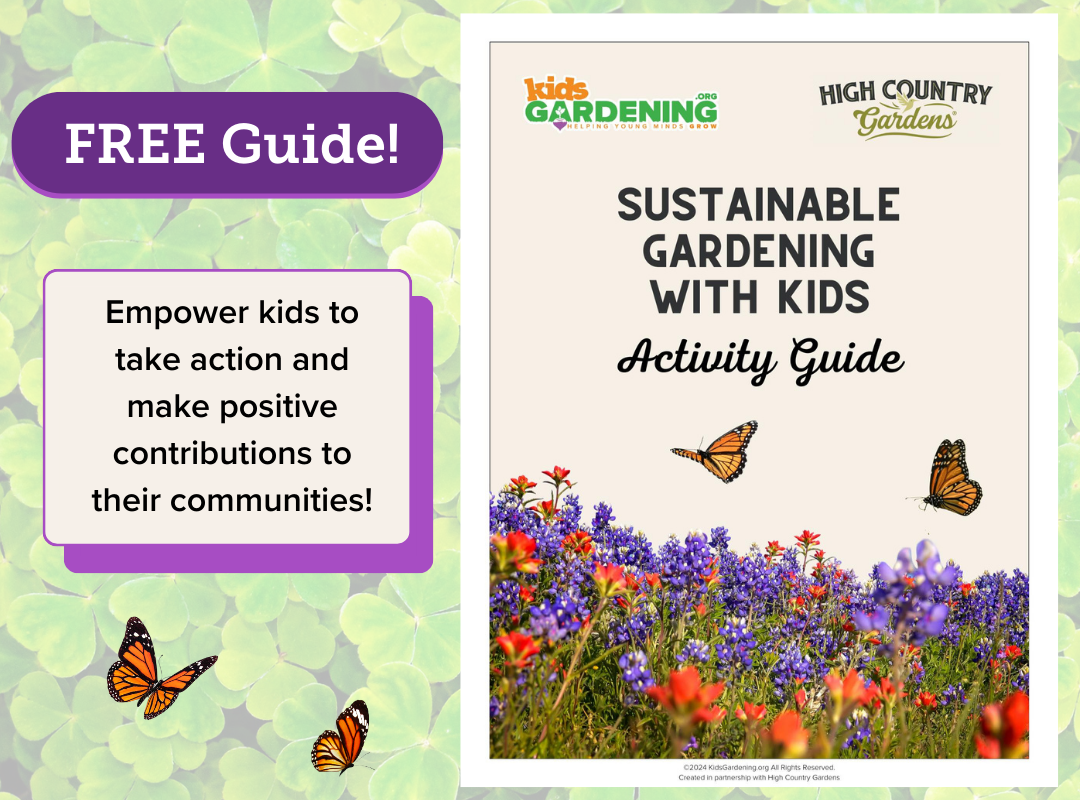Materials:
- Copy of the Exploring Hydroponics Guide
- Assorted materials depending on the system you choose to make
- Hydroponic nutrient solution
- Seeds (lettuce and basil are good starter options)
Approximate Time to Complete: 1 to 2 hours for construction, 4 to 6 weeks to grow
Location: Indoors is usually best; however, some systems may be able to grow outside, too
Ages: All Ages
Season: All Seasons
Background
In traditional gardening, plants get root support, nutrients, water, and oxygen from the soil. Without soil, hydroponic growers must find ways to provide for these plant needs in other ways. Adaptations of hydroponic growing techniques include:
Water and Air: In the soil there are naturally occurring pockets of air and water, both of which contribute to proper root growth and functioning. There are many different ways for hydroponic systems to deliver this mix of water and oxygen to the roots. In some setups, water and nutrients reach the roots via a wick made of absorbent material, and part of the roots are continually exposed to air. Others actually grow the plants in a porous medium like rockwool, which acts as a soil substitute due to its capacity to offer similar pockets of air and water for roots. Some hydroponic systems use a pump to infuse oxygen into the water, similar to how a fish tank aquarium works. Another option is for the medium and roots to be periodically splashed or flooded with a nutrient solution, allowing oxygen to bathe the roots in the interim.
A Place to Grow – Root Support: The material that a plant lives in or on is called its medium or substrate. For most plants, the medium is soil. Hydroponic growers find other ways to support growth and to prevent drowning roots by allowing them to remain sitting in water. Many setups use an inert, sterile medium to serve as a base (like a soil substitute). Some of the more popular choices included gravel, clean sand, perlite, and rockwool. Other hydroponics systems have no real support media, but rather incorporate more or less elaborate ways of suspending plants in nutrient solutions.
Nutrients: In soil, nutrients come from rock and mineral leaching and organic matter decomposition. They are “held” by the soil particles and dissolved in the surrounding water before being absorbed the roots. In hydroponics, growers dissolve nutrients needed by the plant directly to the irrigation water being applied to the roots.
Light: Hydroponic systems can be designed to provide light from both natural light sources or from artificial lights.
Here are instructions for a sample DIY hydroponic unit that uses a 2-liter bottle for a container, an aquarium pump to provide aeration, and rockwool (or a cotton ball) to start the seeds and support the roots.
Soda Bottle System
- Soak small squares of rockwool or cotton balls in a dilute hydroponic nutrient solution. Plant two or three lettuce seeds in each one, and then place them on a waterproof tray or shallow container and keep moist until seeds germinate. After they have started to grow and have some root formation, they are ready to transplant into your soda bottle system. See Starting Seeds for Hydroponics for more information.
- Cut the top off of the soda bottle leaving a bit of the sloping neck. For this system, you will invert the top of the bottle into the bottom. The inverted top will hold your plant while the opening of the bottle will allow access to nutrient solution you will place in the bottom of the 2-liter bottle. After making your cut, check to make sure your top will securely fit inside of the bottom and also make a notation of where the bottom of the inverted bottle opening falls. You will need your nutrient solution to reach this point.
- On the side of the bottom half of the 2-liter bottle above the future nutrient solution line, create a small hole so you can insert an aquarium pump tube. Insert aquarium tubing through the hole you made so that it reaches near the bottom of the bottle, but not touching the bottom. As an optional feature, you may want to consider attaching the submerged tubing to an air stone. Air stones can be made of different types of materials, but in general are porous stones used to diffuse the air being pumped into water into smaller bubbles. The stone will also add weight to your bottle and help your tubing stay in place. It may also decrease the sound produced by your system. Connect the other end of the tubing not in the water to your pump.
Fill the bottom of the bottle with a nutrient solution until it reaches the point where the bottom of the inverted bottle top will be located. Place the rockwool or cotton ball containing your lettuce seedlings so that it securely fits into the main hole of the inverted bottle top. Then place the inverted top into the bottom half of the 2-liter bottle.
To discourage algae growth, wrap aluminum foil, dark plastic, or paper around the setup to exclude light from the water and roots.
Try to keep the nutrient solution pH between 5.8 and 6.5 and the temperature at about 70 F, and change it every two weeks or so. Some people suggest using a half-strength solution for the first week.
For additional DIY ideas, check out the Exploring Hydroponics Guide from KidsGardening, the National Farm to School Network, and the Scotts Miracle-Gro Foundation.



